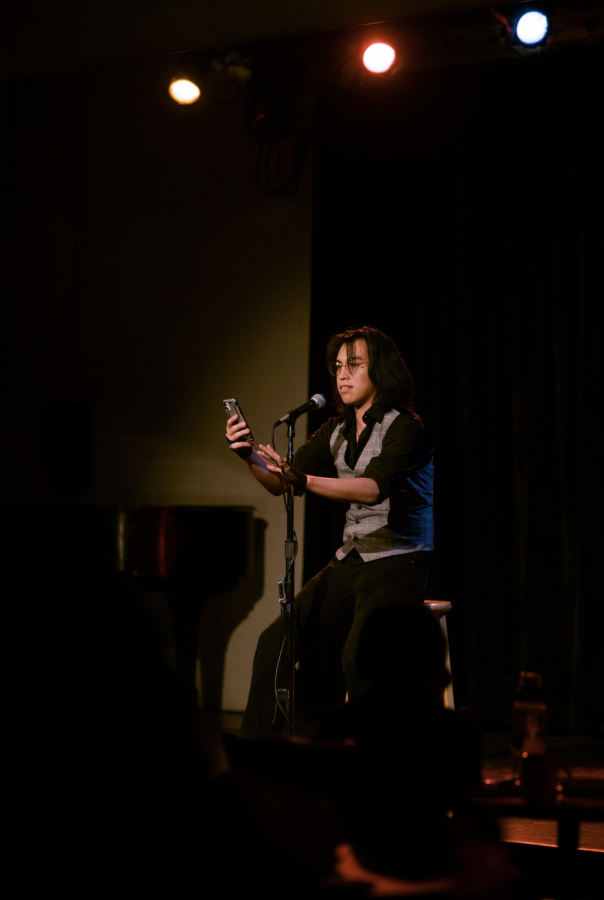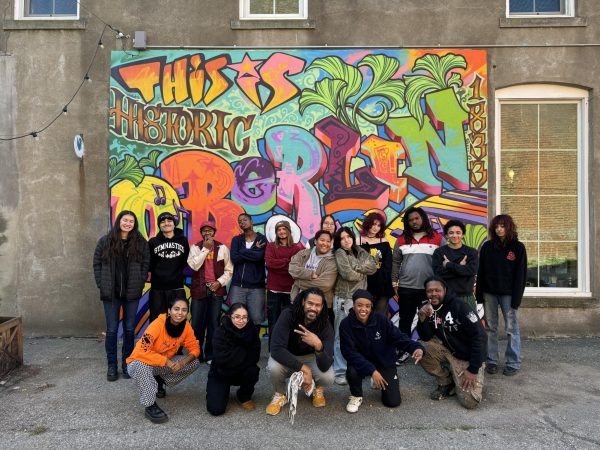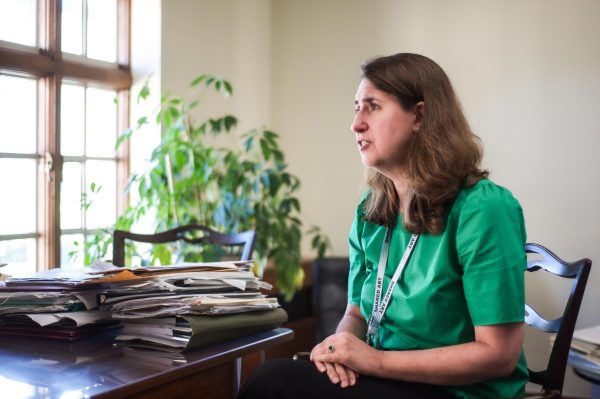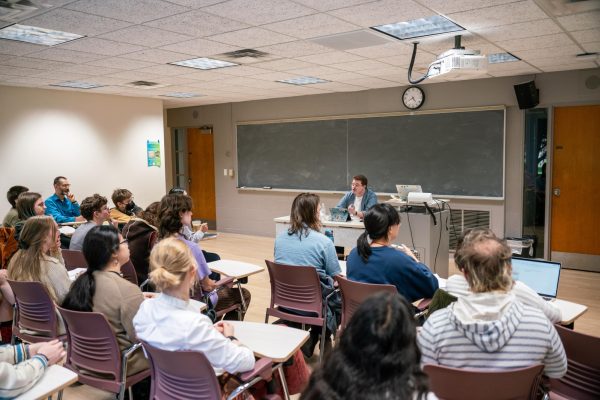Artists Emphasize Importance of Telling AAPI Stories
Photo by Erin Koo, Photo Editor
Oberlin Shansi AAPI Experience Grant recipient Joel Tang performed at Cat in the Cream Sept. 22.
Asian, Asian-American, and Pacific Islander voices have been historically underrepresented in the arts and media. Although hostility and violence towards Asian-Americans and Pacific Islanders has been prevalent in the United States for centuries, the especially targeted anti-Asian hate crimes during the COVID-19 pandemic led to a heightened demand for increased diversity in artistic spaces. There is much work to be done, and many young Asian-American and Pacific Islander artists and thinkers are working to challenge the current Eurocentric vision of academic art.
Because of limited representation throughout many young AAPI artists’ education, it often takes time to develop an artistic voice that encapsulates the nuances of the Asian-American and Pacific Islander experience.
Lea Crowley, a first-year College student and visual artist, commented on her limited exposure to diverse artists and art forms in her education.
“Only toward the end of high school was there a small amount of exposure toward different races of artists in general,” Crowley said. “Most of my inspiration comes from my dad, who is white, so I have always admired a lot of white male artists. I don’t like to say it, but that is who I have commonly turned to as my inspiration, such as my favorite artist Larry Rivers.”
The Oberlin Shansi AAPI Experience Grant aims to amplify the voices of students who share that identity in artistic spaces. The grant supports student projects that highlight AAPI experiences in North America.
College third-year and poet Joel Tang, a recipient of the AAPI Grant, presented a poetry reading at the Cat in the Cream Thursday, Sept. 22. Tang’s poetry tells a few of the many intergenerational stories of the Asian-American experience. His work also sheds light on how AAPI students on campus use art to respond to anti-Asian hate and share their stories. Ted Samuel, senior director of Oberlin Shansi, introduced Tang’s reading by contextualizing Oberlin Shansi’s call for action among upticks in anti-Asian hate.
“We [have] witnessed an alarming rise of anti-Asian hate and harassment,” Samuel said. “As we considered our organizational response to this devastating trend of systematic violence, we considered programmatic interventions, especially given Shansi’s historic connection to Asian communities, institutions, and individuals. ”
Tang’s poetry reflects his experience as a Latinx and Asian-American person living in the United States. He has been writing poetry since he was a child, but only joined the spoken-word community once he arrived at Oberlin. As a singer-songwriter, taking his poetry onto the stage just felt right.
“There is definitely a correlation between being a singer-songwriter and a poet,” Tang said. “To be a songwriter … you have to write poetry, and then you have to take poetry and put it together with music, so it is both being a composer and a lyricist … Being a poet makes this process smooth because I already have one of those jobs out of the way.”
The art of spoken word draws from a diverse history of human expression and communication. Spoken-word poetry is an oral performance art with an extensive contemporary history in multicultural storytelling.
Unsurprisingly, many spoken-word artists use the medium to communicate stories of personal and shared experiences to their audience. Spoken-word poetry is often used to raise awareness on societal issues. Today, spoken word has found a critical place in music, with increased use in hip-hop and other popular genres.
“I do consider myself a storyteller,” Tang said. “I think a good poem should have a shift from one side to the next, and the easiest way to do this is to tell a story, starting in one place and ending in another.”
Tang’s poetry honors his personal and generational history while also portraying a dream for a better life as an Asian American. His words aim to represent his community of multiracial Americans.
“I would say that I am one of the first people in my community to introduce poetry of this nature,” Tang said. “I touched upon this in my reading. It can be isolating to talk about my life experiences because I don’t really feel a connection to the history of this art form, as I have not seen myself represented in it. Here’s hoping for future generations to have more representation.”





